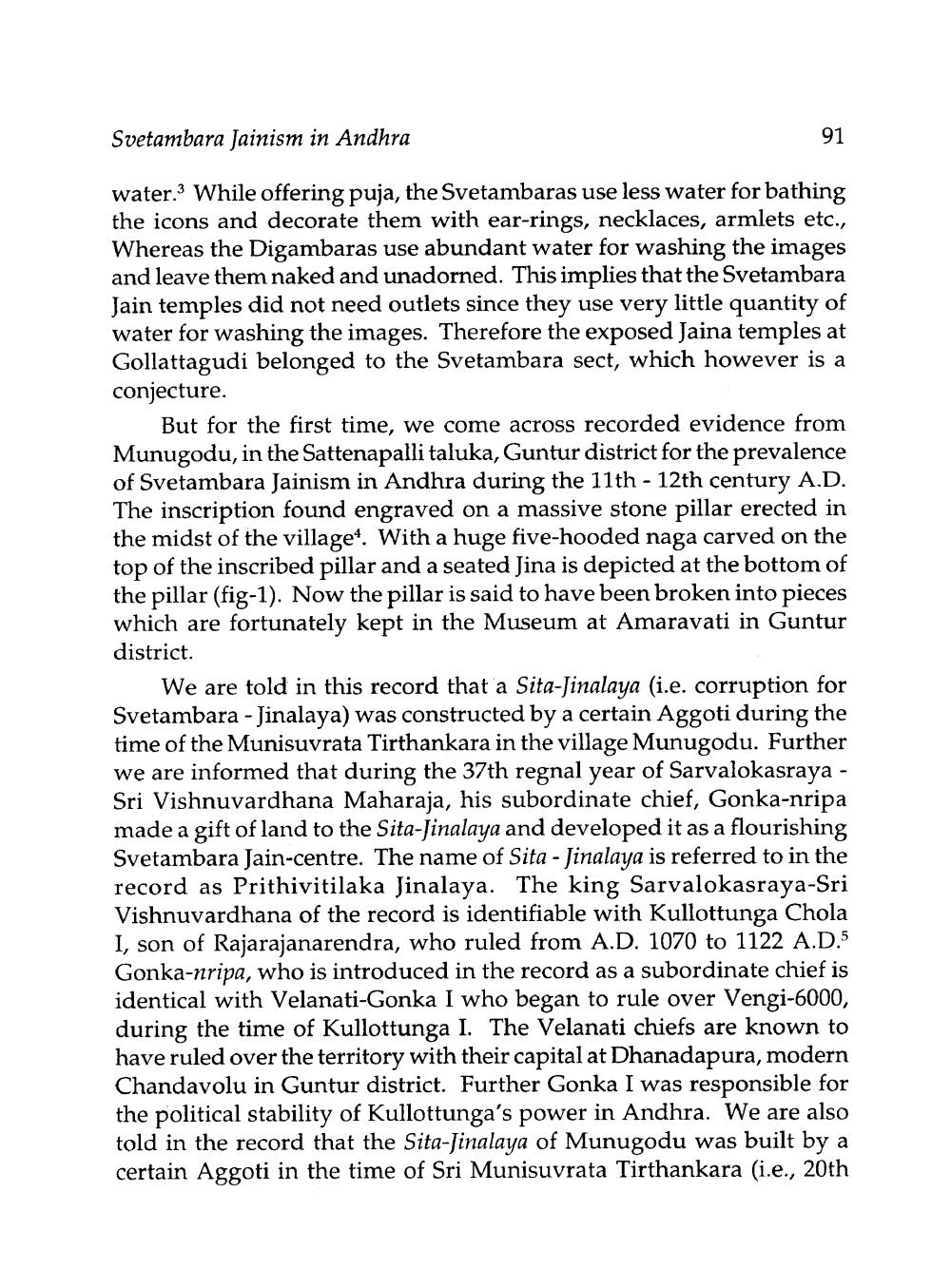________________
Svetambara Jainism in Andhra
water. While offering puja, the Svetambaras use less water for bathing the icons and decorate them with ear-rings, necklaces, armlets etc., Whereas the Digambaras use abundant water for washing the images and leave them naked and unadorned. This implies that the Svetambara Jain temples did not need outlets since they use very little quantity of water for washing the images. Therefore the exposed Jaina temples at Gollattagudi belonged to the Svetambara sect, which however is a conjecture.
91
But for the first time, we come across recorded evidence from Munugodu, in the Sattenapalli taluka, Guntur district for the prevalence of Svetambara Jainism in Andhra during the 11th - 12th century A.D. The inscription found engraved on a massive stone pillar erected in the midst of the village. With a huge five-hooded naga carved on the top of the inscribed pillar and a seated Jina is depicted at the bottom of the pillar (fig-1). Now the pillar is said to have been broken into pieces which are fortunately kept in the Museum at Amaravati in Guntur district.
We are told in this record that a Sita-Jinalaya (i.e. corruption for Svetambara - Jinalaya) was constructed by a certain Aggoti during the time of the Munisuvrata Tirthankara in the village Munugodu. Further we are informed that during the 37th regnal year of Sarvalokasraya - Sri Vishnuvardhana Maharaja, his subordinate chief, Gonka-nripa made a gift of land to the Sita-Jinalaya and developed it as a flourishing Svetambara Jain-centre. The name of Sita - Jinalaya is referred to in the record as Prithivitilaka Jinalaya. The king Sarvalokasraya-Sri Vishnuvardhana of the record is identifiable with Kullottunga Chola I, son of Rajarajanarendra, who ruled from A.D. 1070 to 1122 A.D.5 Gonka-nripa, who is introduced in the record as a subordinate chief is identical with Velanati-Gonka I who began to rule over Vengi-6000, during the time of Kullottunga I. The Velanati chiefs are known to have ruled over the territory with their capital at Dhanadapura, modern Chandavolu in Guntur district. Further Gonka I was responsible for the political stability of Kullottunga's power in Andhra. We are also told in the record that the Sita-Jinalaya of Munugodu was built by a certain Aggoti in the time of Sri Munisuvrata Tirthankara (i.e., 20th




